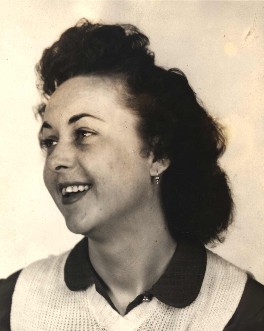 The case that affected me the most was the March 8, 1951 murder of Jean Sanseverino. She came to New York from Alabama to be with the husband who had left her a year before and had returned to New York, where he was from. It didn’t go well. He wanted to send her back to Alabama, but she said, “No. I’m going to stay in New York and have fun.” A month later she was dead.
The case that affected me the most was the March 8, 1951 murder of Jean Sanseverino. She came to New York from Alabama to be with the husband who had left her a year before and had returned to New York, where he was from. It didn’t go well. He wanted to send her back to Alabama, but she said, “No. I’m going to stay in New York and have fun.” A month later she was dead.
She was only 26. Before she was murdered she spent the last month of her life making the same stupid mistakes young women everywhere make in their twenties, especially at the end of a marriage that wasn’t everything a young girl dreams. Jean never got the chance to stop, grow up, and pull her life together. She wasn’t around long enough to discover there are a lot worse things than loneliness.
In 1951, they couldn’t measure alcohol levels as exactly as they can now. They used a scale of 1 to 4. Jean measured at 3+.
 She must have been plastered the night she died, but she probably sobered up quickly. “Being strangled–having your neck grasped and crushed until the blood stops flowing, and the air gets trapped in your throat and the small blood vessels in your face and eyes start to pop”–hurts,” Dr. Jonathan Hayes, a Senior Medical Examiner at the OCME explains. “Eventually, the victim will lose consciousness, but her struggling can prolong her own suffering, as she repeatedly pushes away the killer’s hands, briefly letting the breath flow and the blood circulate again, before they are abruptly cut off as the hands go back around her neck and the choking continues.”
She must have been plastered the night she died, but she probably sobered up quickly. “Being strangled–having your neck grasped and crushed until the blood stops flowing, and the air gets trapped in your throat and the small blood vessels in your face and eyes start to pop”–hurts,” Dr. Jonathan Hayes, a Senior Medical Examiner at the OCME explains. “Eventually, the victim will lose consciousness, but her struggling can prolong her own suffering, as she repeatedly pushes away the killer’s hands, briefly letting the breath flow and the blood circulate again, before they are abruptly cut off as the hands go back around her neck and the choking continues.”
The medical examiner estimated that Jean died at roughly 5:30 that morning. A little while later, the sun rose. It was chilly that morning, 38 degrees, and it felt like it was going to rain.
When I found her case sitting in a closet, no one had so much as even looked at it in decades. And why should they? The killer is likely dead. The detectives want to save lives, they want to catch killers who might kill again. Still, I thought, maybe somewhere in Alabama she has family who are still alive and who think of her and wonder from time to time, “you send your daughter up to New York, she comes back in a box and nothing happens? Nobody pays?”











